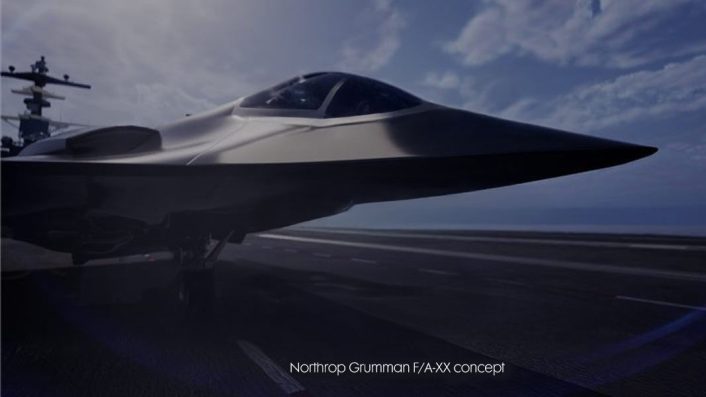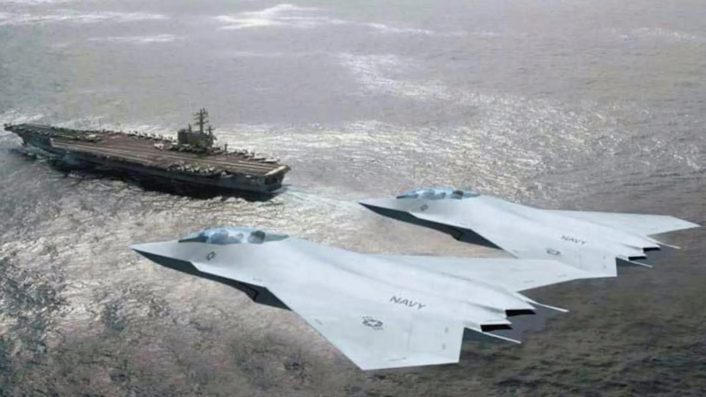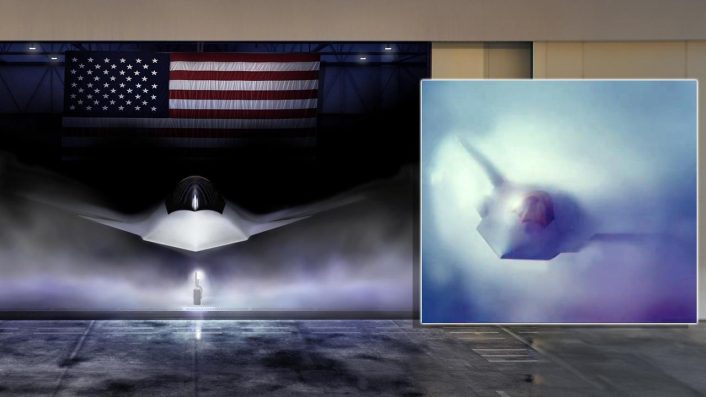Vice Admiral Daniel Cheever, Commander of the Naval Air Forces, stressed the need for a naval sixth generation carrier-borne jet distinct from the Air Force’s F-47.
Following weeks of uncertainty, the U.S. Navy can now breathe a sigh of relief and prepare for a downselection of a winning design for the F/A-XX sixth-generation naval fighter. In fact, the Congress is restoring the funds destined to the program, after it was initially put on hold to give priority to the Air Force’s F-47.
“It’s going to be a very exciting aircraft. I’m looking forward to the downselect. I’ll leave it to the professional acquisition folks…but I’m looking forward to that because that sixth-generation means air superiority in that timeframe in the future, which means sea control,” said Vice Adm. Daniel Cheever, Commander of Naval Air Forces, during a CSIS event. “And as long as you have air superiority, you have sea control around the globe.”
Navy excited after Senate’s F/A-XX save
Cheever, also known as the Navy’s ‘Air Boss.’ recently stressed on how the F/A-XX will be a totally separate design and effort than the Air Force’s F-47 NGAD, laying emphasis on its carrier-capable characteristics. The comments were part of a talk hosted by the CSIS (Center for Strategic and International Studies) on Aug. 27, 2025.

Cheever responded to a question by the panelist, Rear Admiral (retd) Raymond Spicer, CEO and publisher of the USNI (U.S. Naval Institute), about whether the new aircraft, like the F-35, will have different variants for the Air Force, Navy and Marine Corps. The Air Boss’ answer was: “[..] for the sixth generation I see a maritime version of the aircraft that starts at the carrier. is made for the carrier and is a complete carrier version. It will be replacing both the Super Hornet and the Growler. So it is a combination of all things.”
Cheever’s stress on a distinct carrier-capable sixth-generation fighter also comes as reports said Pentagon officials were focusing on the F-47 NGAD and not the F/A-XX. This was owing to concerns over the defense industrial base’s capacity to simultaneously handle two such high-end projects.
The Senate Appropriations Committee then, on Jul. 31, 2025, approved $1.4 billion for the F/A-XX program in the FY 2026 Defense Appropriations Bill. This was followed by Aviation Week reporting on Aug. 24 about Cheever hoping the program would move towards a downselect, according to comments at the Tailhook Symposium.
While Boeing was awarded the F-47 NGAD contract and is also a contender for the F/A-XX, along with Northrop Grumman, Lockheed Martin is no longer in the running for the naval jet as its proposal was reportedly declined by the U.S. Navy.
That decision could have been not only a Navy decision, but also a political prerogative, made by the highest levels in the Pentagon and the White House. This would be similar to Boeing’s choice as winner for the NGAD and its designation as the F-47, announced by President Donald Trump.
U.S. Navy F/A-XX
The Navy plans to field its F/A-XX by the 2030s, replacing the F/A-18E/F Super Hornets and E/A-18G Growlers to operate alongside the F-35C. In the CSIS talk, VAdm Cheever said that they are “right now in the fourth and fifth generation” stage of the ideal “fourth, fifth and sixth generation” combination, before the “sixth generation actually replaces the F-18s and the Growlers.”
Earlier, there were reports about the F-47 NGAD and the F/A-XX being coordinated endeavours to ease the development, supply chain and logistics cost. The War Zone said in March 2025: “The Navy is involved in direct cooperation with the Air Force’s program and both initiatives put crewed fighters at the center of a broader ‘system of systems’ that will also include advanced Collaborative Combat Aircraft (CCA) drones. Details of the specific crossover between the two programs remain fairly scarce, however.”
Boeing has also not revealed whether there is a relationship between the F-47 design and the F/A-XX. However, if the two are related, or at least derivatives, it would uncomplicate the development, prototyping and testing, while attaining some economies of scale.

Sixth generation, power projection and CCAs
The incoming Chief of Naval Operations Adm. Daryl Caudle told the Senate Armed Services Committee’s confirmation hearing on Jul. 24, 2025, that the service has a “validated requirement for carrier-based sixth-generation aircraft.” Caudle further said “it is critical that we field that capability as quickly as possible to […] win against a myriad of emerging threats.”
During the CSIS talk, Cheever linked sixth generation networking and strike capability to naval theory. “Sixth generation means air superiority in that time frame in the future which means sea control. And as long as you have air superiority, you have sea control around the globe. And so that sixth generation really ensures that you have that sea control and that [manned-unmanned] teaming,” Cheever explained.
The Navy’s current unmanned platform is the MQ-25 Stingray, meant to unburden the F/A-18E/F Super Hornet fleet of the mid-air refueling role. Cheever reiterated his statement from January 2025 that the unmanned aircraft will fly by 2025 and be integrated onto the carriers by 2026.

The USS George H.W. Bush has already received the first Unmanned Air Warfare Center (UAWC) for controlling the MQ-25 and continued testing of the Unmanned Carrier Aviation Mission Control Station’s (UMCS).









